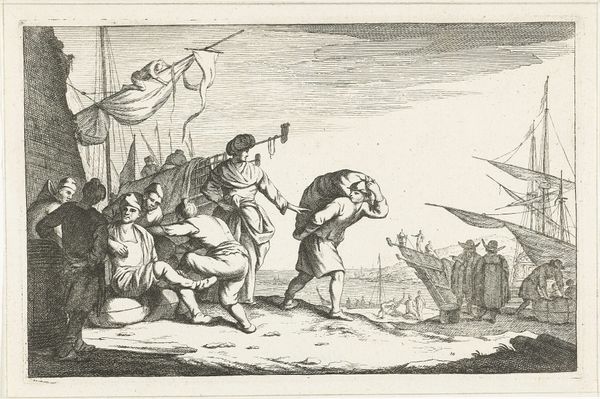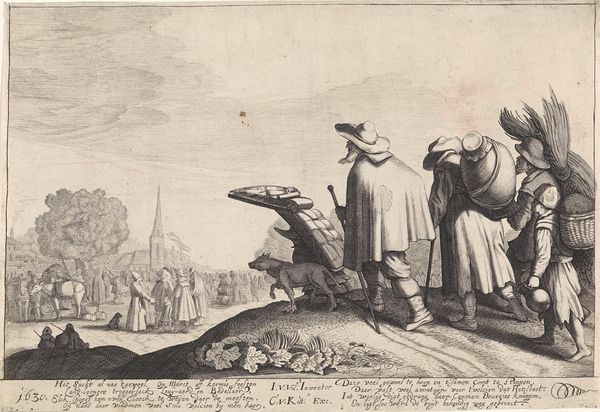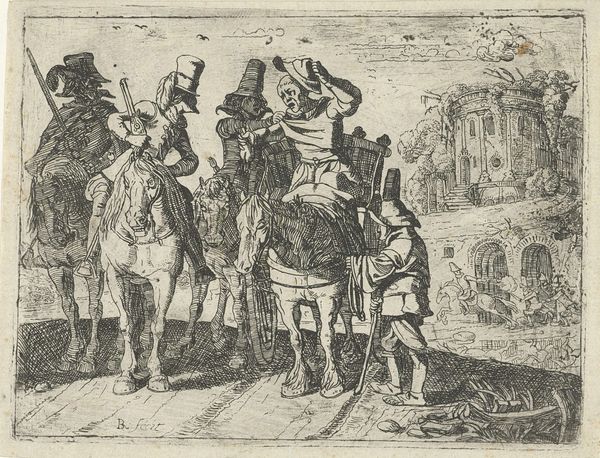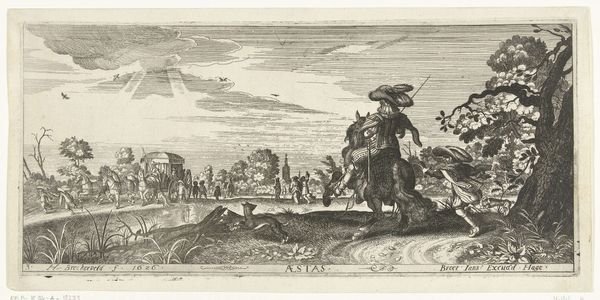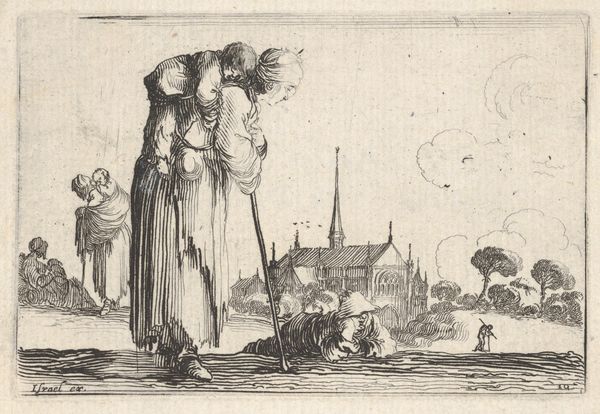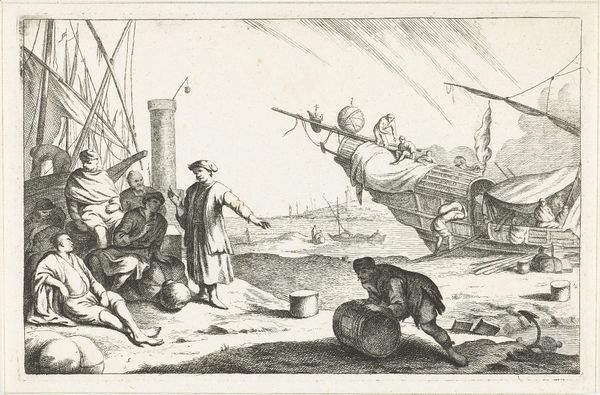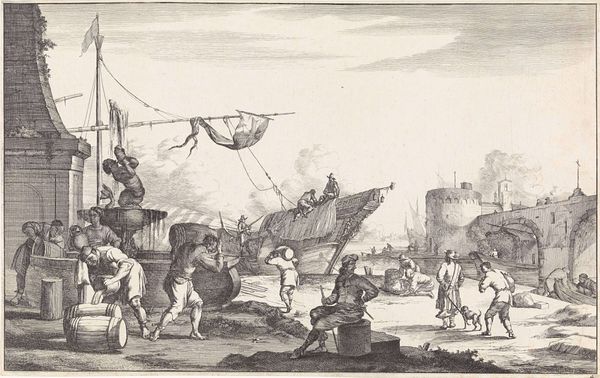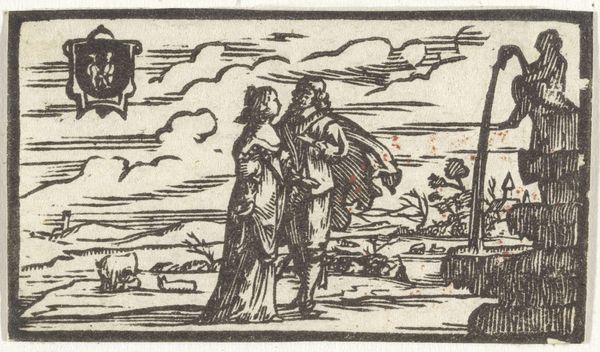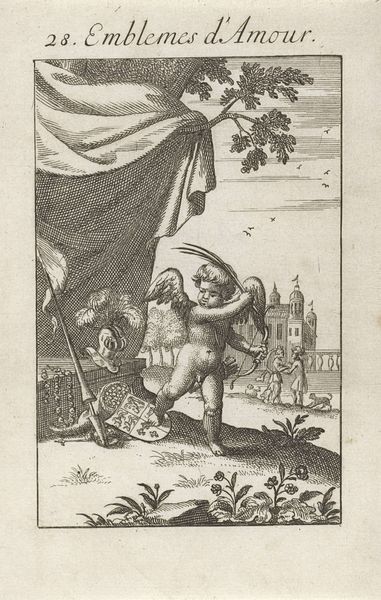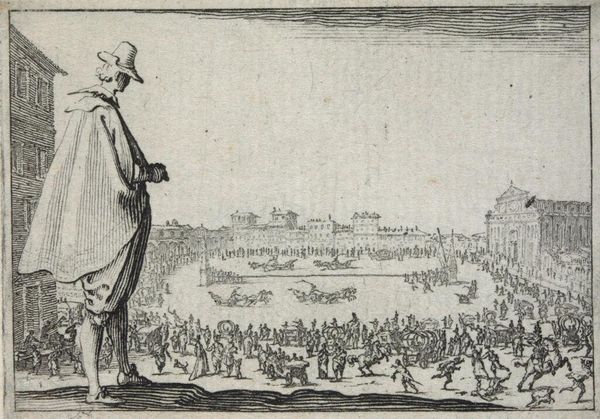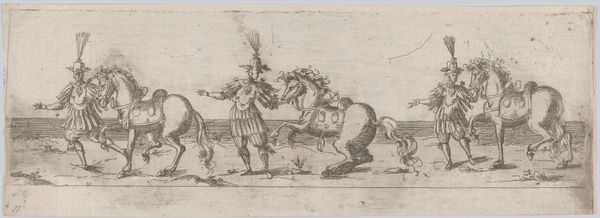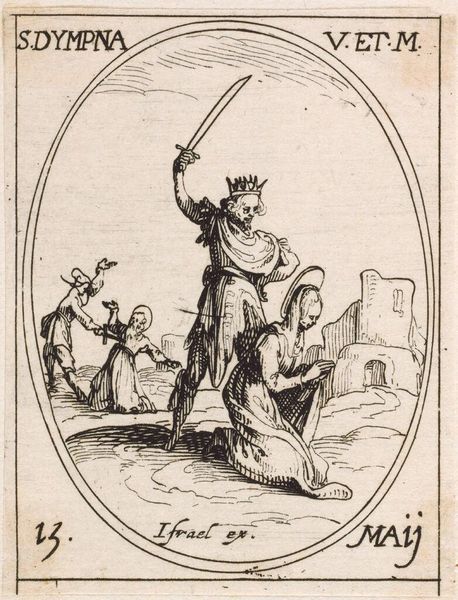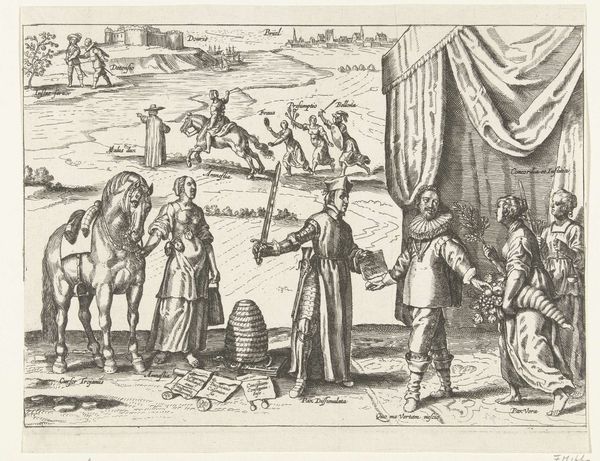
print, etching
#
narrative-art
#
baroque
# print
#
pen sketch
#
etching
#
landscape
Dimensions: height 74 mm, width 90 mm
Copyright: Rijks Museum: Open Domain
Editor: This etching, "Soldiers by a Herm of Mercury," made sometime between 1656 and 1717 by Nicolaes Cornelisz. Witsen and now at the Rijksmuseum, has quite a chaotic feel. What strikes me is the juxtaposition of the serene herm with the soldiers and some sort of bonfire… What do you make of it? Curator: It's certainly a loaded image! Witsen, from his position of power and wealth, would have understood the socio-political implications of depicting military life. Think about the Dutch Republic at this time: they’re constantly at war, projecting their power through military force, but also dependent on trade. Mercury, of course, represents commerce. Editor: So, you're saying the placement of the Mercury statue isn’t accidental? Curator: Not at all. It might suggest a commentary on the relationship between military power and commercial success in the Dutch Golden Age. Are those cannonballs or just balls on fire? That may signal violence but maybe also just an idle moment for the soldiery? How do you think this image circulated and whom do you imagine to be the consumer? Editor: Maybe pamphlets? Someone wants to justify war but can't decide if it is beautiful or destructive? What is that figure atop of the pillar, on the other side of the bonfire? Another commanding presence. I can see where there's a conversation being made here, between these powerful figures and, perhaps, the glorification of mercantile success and military strength. Curator: Exactly. Witsen likely crafted this etching as more than a simple landscape; it's a document reflecting the public role of art and the politics embedded within imagery during the Dutch Golden Age. What's neat for me, too, is seeing how artists and institutions of power interact to perpetuate a political vision. Editor: Thanks; now, after considering its cultural and historical context, this feels less chaotic and more pointed. The juxtaposition really brings out the tension.
Comments
No comments
Be the first to comment and join the conversation on the ultimate creative platform.
